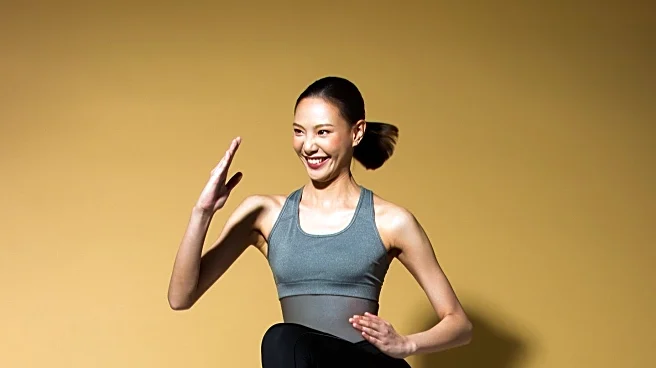What's Happening?
Recent research led by Professor Emmanuel Stamatakis at the University of Sydney has uncovered that just one minute of vigorous activity daily can extend lifespan and reduce cardiovascular risks. The study involved nearly 3,300 Americans, averaging 51 years old, who did not engage in formal exercise. Participants wore monitors for a week to track incidental activities like walking uphill or carrying heavy bags. Findings published in medRxiv indicate that 1.1 minutes of strenuous movement daily lowered the risk of dying from any cause by 38% over six years. The study also highlighted that short bursts of high-intensity exercise, even as brief as ten seconds, can be beneficial.
Why It's Important?
This study challenges traditional views on exercise, suggesting that even minimal vigorous activity can have substantial health benefits. It offers a promising alternative for individuals who are gym-phobic or have limited time for structured workouts. The implications are significant for public health, potentially reducing the prevalence of cardiovascular diseases, which are a leading cause of death in the U.S. The findings could influence future health guidelines and encourage more people to incorporate short bursts of activity into their daily routines, thereby improving overall health outcomes.
What's Next?
While the study's results are promising, it has yet to undergo peer review. Researchers aim to explore ways to increase incidental activity in daily life without requiring gym visits. This could lead to new interventions or public health strategies that promote physical activity in everyday settings. The NHS continues to recommend 150 minutes of moderate-intensity exercise weekly, but this study may prompt a reevaluation of these guidelines, emphasizing the benefits of short, vigorous activities.
Beyond the Headlines
The study raises questions about the accuracy of wrist trackers in measuring exercise intensity, suggesting a need for improved technology. It also highlights the potential for lifestyle changes that integrate physical activity seamlessly into daily routines, which could have long-term cultural impacts on how society views exercise and health maintenance.











